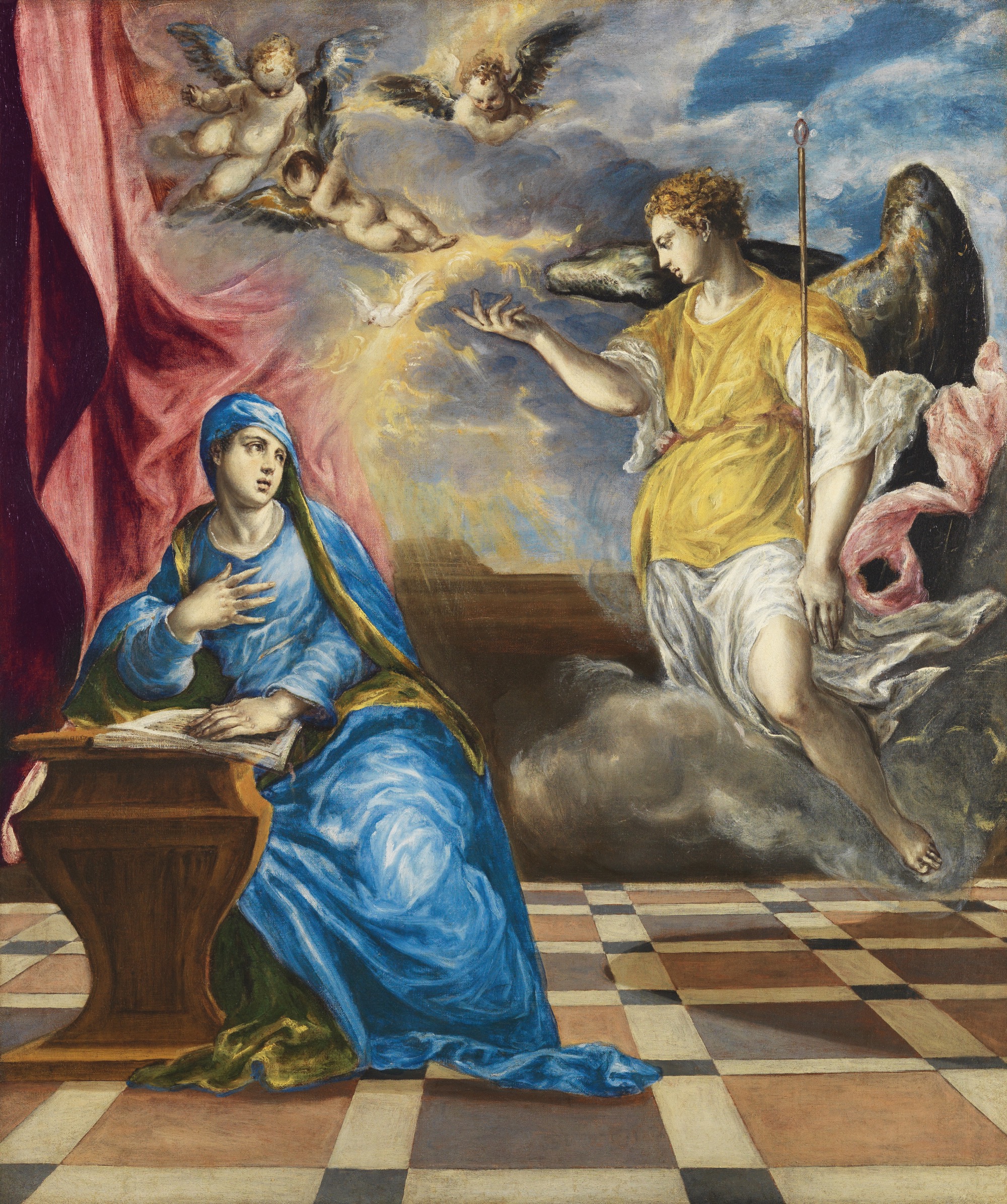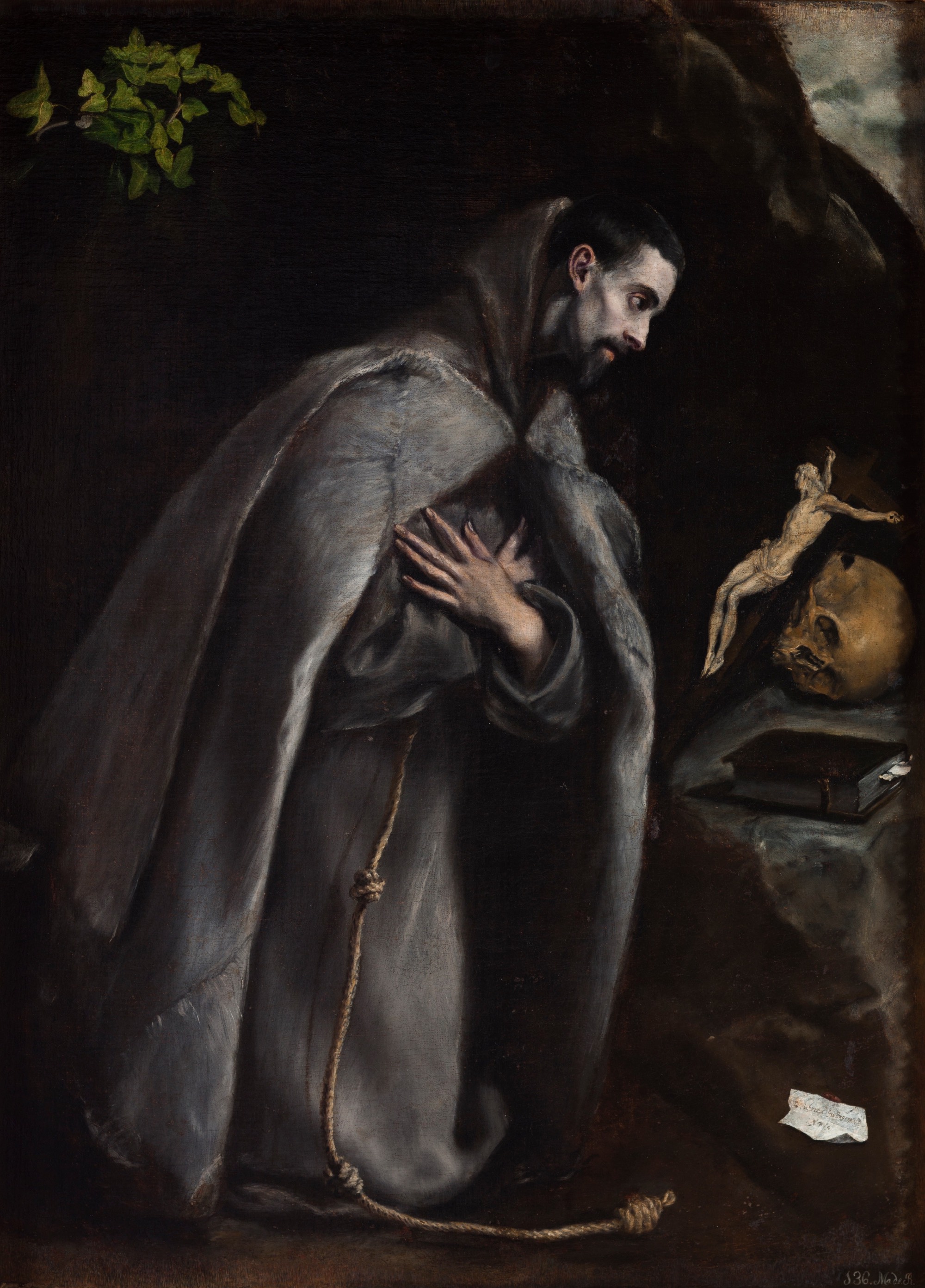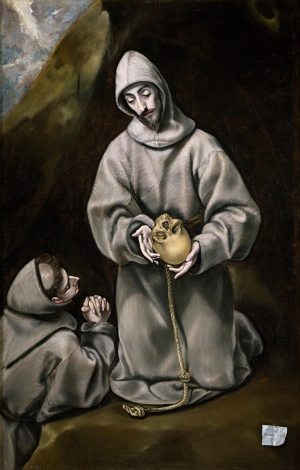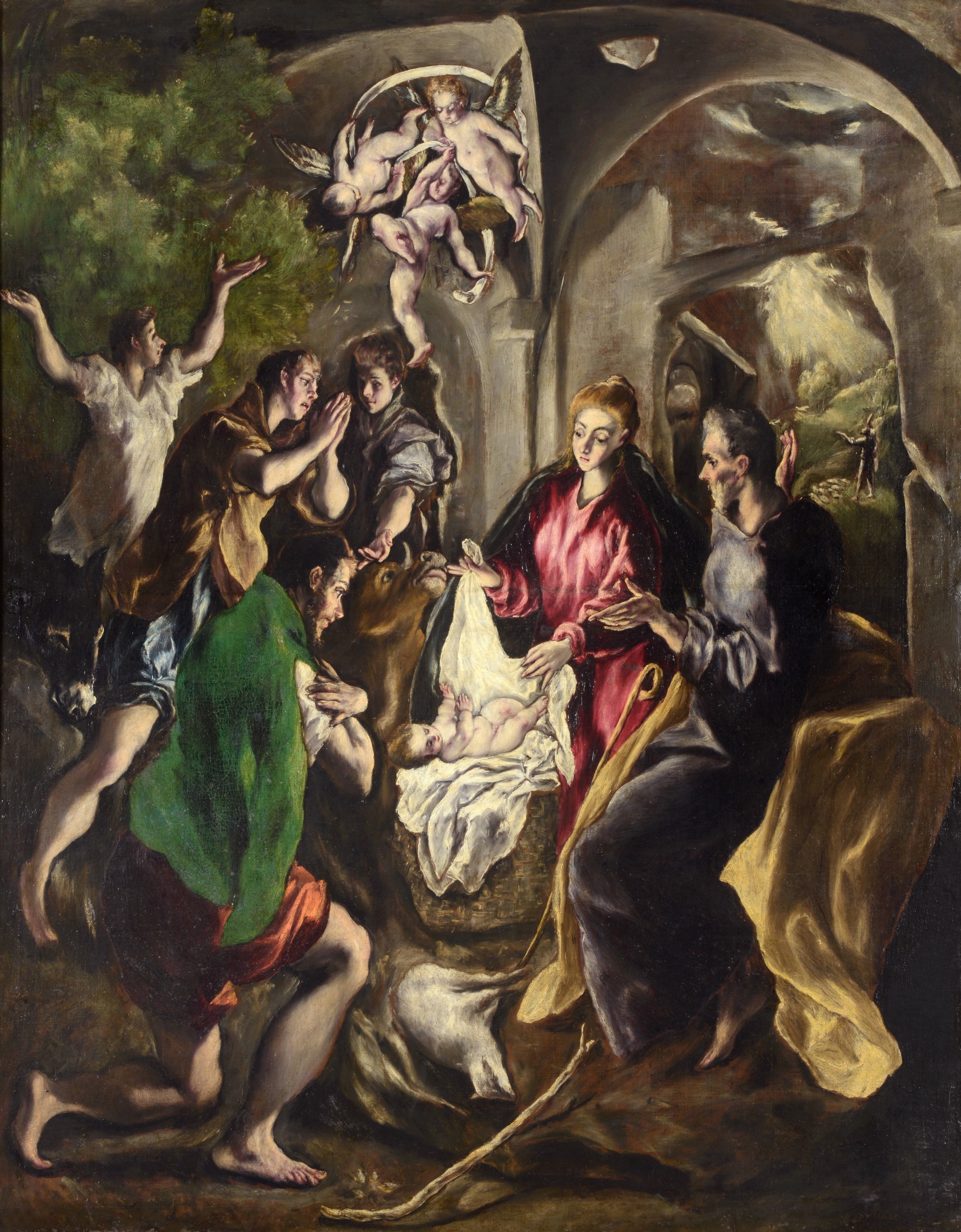Before talking about El Greco, I would like to premise that last month I went to see the conclusion, on the last day, of the great Guido Reni exhibition, organised at the Museo del Prado in Madrid, with some works that will be included in the exhibition I am preparing for the Scuderie del Quirinale, on the occasion of the Jubilee. And, while I walked through the rooms with a ballet of artists miming the paintings as tableaux vivants, I was able to admire in the side rooms an important exhibition, albeit limited to a chamber dimension, ‘Picasso, El Greco y el cubismo analítico’: some paintings from Picasso’s early cubist period and some paintings by El Greco dialoguing in a very intelligent way. I had heard about this project and I also remembered that Picasso had had the opportunity to see, in Zuloaga’s house, a masterpiece by El Greco, which evidently inspired his research. So the affinity between Cézanne and the Cretan artist and the relationship with Picasso are signs of a clear relevance. Anyone who looks at El Greco without knowledge of art history cannot think that he is a 16th or even a 17th century painter, although there are, from a chronological point of view, some interesting facts to point out. El Greco was born thirty years before Caravaggio, in 1541, and died four years later, in 1614. When El Greco arrives in Rome, Caravaggio was not yet born. So there is no contact between the two. Caravaggio is a modern painter, akin to our sensibility, and he arrived in Rome rather late, when El Greco had already left. One cannot imagine two painters further apart. When people began to study Mannerism, El Greco became its champion, in its most forward-looking dimension, and the relationship with a great artist such as Parmigianino – a painter of absolute modernity whom he watched and devoured – is decisive, in a vision that remains late 16th century. El Greco does not know naturalism, he is profoundly anti-naturalist. His opposite, in Spain, very close to Caravaggio, is Velázquez, the painter of the real, perhaps even more so than Caravaggio. And this – la realidad – remains important. I have just been to Madrid to pay homage to a friend, the greatest living painter, something difficult to say to contemporary art connoisseurs with fake myths, children of fashion. The greatest living artist lives in Spain, is admired and when he walks down the street he is treated as if he were Raphael. His name is Antonio López García. I have decided to honour him in 2025 with a major exhibition at the museum I preside over, the Mart in Rovereto. I would like the city of Milan to participate in this initiative in collaboration with Palazzo Reale.
Because it is important to emphasise that there is no such thing as contemporary art, and that being contemporary does not mean necessarily taking one side. It is not a party. Contemporaneity is a chronological fact; different things coexist in it. It is evident that López García has always had great admirers and great market value, which saves him from the qualunquists of contemporary art. And it is remarkable that an artist like him, slow, patient and measured, is so humble as to say ‘If I had been Italian, I would not have been able to paint. Italy is so overburdened with geniuses from Antelami to Giotto, Masaccio, Beato Angelico, Piero della Francesca, Perugino, Signorelli, Mantegna, Donatello, Agostino di Duccio, Verrocchio, Botticelli, Niccolò dell’Arca, Raphael, Leonardo, Michelangelo, Caravaggio, Tintoretto, Veronese, Tiepolo, Canova and a thousand others, that I would have been powerless before them. Instead, in Spain we only have six, and those six are: El Greco, Murillo, Velázquez, Zurbarán, Goya and Picasso’. The seventh great universal artist of Spain is Antonio López García. I have said it and I have been saying it for a long time. And I believe the time has come to affirm that there is a great contemporary art that does not pass through the masks of the market, through values consolidated only by money. López García lives as a poor artist, and poor he is not. He lives in a small house, with a studio. He has lost all his friends and relatives.
His wife Maria Moreno died, Francisco López died, Julio López died, Isabel Quintanilla died, artists who worked with him at the school in Tomelloso. And he lives in this bewildering and wonderful naivety like a true poet, like a Pascolian child. I think that an exhibition of López García can establish continuity in the relationship with Spain through the great exhibitions organised by Palazzo Reale.
I would like to add now that if I look at El Greco with boundless admiration, it is because he is indeed more contemporary than many contemporary artists. And because he became what he became in opposition to Michelangelo and the great Roman painting. In Rome he was called ‘a stupid foreigner’; and he replied: ‘a good man Michelangelo but he could not paint’. True, Michelangelo was not a painter, he was a sculptor. Michelangelo’s painting is weighed down by sculpture and is not such as to communicate vibrant emotions like the painting of Tiziano, Bassano, Tintoretto, who died when even El Greco had moved away from Italy. He had been in Venice between 1567 and 1570, at the most crucial time. A few years earlier, Vasari had gone there, bringing Michelangelo’s strength to a Tiziano capable of bending it to his absolute devotion to living colour. Tiziano died in 1576, Paolo Veronese in 1588, Bassano in 1592 and Tintoretto in 1594. They are his true contemporaries and true masters. The sap of great Venetian painting by Tintoretto, Bassano and also Tiziano is essential for understanding El Greco. This is why I would have imagined the natural venue of the exhibition in Venice. As a child, I visited an exhibition on Mannerism where El Greco was also involved. And I am convinced that both El Greco and Velázquez are greater than all the great Italian artists; unfortunately for me as a nationalist. When I look at Velázquez I see an absolute painter in whom all art from Giotto to Bacon is concentrated; there is everything in Velázquez. In El Greco there is a unique ability to overcome the barrier of time, any artist is in his canvases, even Pontormo, even Parmigianino, even the mannerists he felt like no other. El Greco lives as if time were not upon him, as if his main enemy, Philip II, was not upon him while he tried to be the painter of the Escorial without succeeding. That is why, against Philip II, he created the marvellous painting The Burial of the Count of Orgaz, an absolute painting, in comparison with which even Picasso disappears. This impressive contemporaneity, of cut, of form, of invention, of El Greco is related to the capacity of a painting, that of Velázquez, to already be Manet, to already be Monet, to already be Bacon. Look at a Velázquez painting, look at Mars at rest and you see Bacon.
It is amazing how two Spaniards managed to escape their time, and El Greco even more so, on an iconographic level, transforming the Byzantine world from which he started, a visionary, timeless world. Here, perhaps the timelessness of the Byzantine world is the key to understanding that El Greco was always timeless. When we look at one of his paintings – I saw the great exhibition in Paris that preceded this one in Milan, a very ambitious exhibition – without knowing the history of art, understood as a historical path, it seems to us an artist who painted yesterday with his ability to make colour, masses, prevail. There is something impressive. Outside of history.
I would also like to mention two Italian painters, who may not have been considered in the Bassano-Tiziano-Veronese-Tintoretto route to El Greco, who are essential for understanding what he stole from Venice to bring to Toledo. The first is a minor painter called Simone De Magistris, from Caldarola, who is the Italian El Greco. Of course, with segments, with almost cubist geometries that are impressive in El Greco and are simplified in De Magistris? with a graphic scheme. But he is impressive because he is a visionary painter, a proto-surrealist painter. The other is an artist from Ferrara, Sebastiano Filippi, known as Bastianino, who at a certain point loses everything and proposes a foggy interpretation, which would have pleased El Greco, of Michelangelo’s Last Judgement in the apse of Ferrara cathedral. And it is a Last Judgement that collapses as if it were ashes, smoke, fog. There is no longer the powerful structure of the sculptor Michelangelo. In this apsidal bowl we observe how everything ends. It is a different vision from that of El Greco, but it could certainly suggest a series of juxtapositions with these artists who manage, at a certain point, to escape their time and become something impregnable, without body, without form. The same reason why, when I see El Greco, I see the first absolute paradigm of contemporary painters.
Bastianino is a powerful painter who manages to dismantle the Last Judgement, and does so against Michelangelo, in the direction of a memento mori, of becoming ashes, of an extreme feeling of the end of everything. This same cupio dissolvi is felt in the greatness of El Greco.
Like the beautiful Portrait of Julius Clovius that favoured his relationship with Philip II, of whom he painted a marvellous portrait, more beautiful than any portrait by Tintoretto.
In short, a great Venetian painter, a great universal painter, a great contemporary painter. But I do not want to say other things that are the reflection a critic makes when he inevitably feels annihilated in front of El Greco. It is the curators’ challenge to organise an exhibition of El Greco. It is the challenge against themselves and against death, because El Greco can never be understood. And to think that a great scholar such as Palomino recorded him as eccentric and extravagant, looking at him with condescension, makes one realise that instead only his connection with modernity makes him a romantic hero and makes his madness understood. Here is the prototype of an absolute madman. A madman who respects nothing, who defies power to paint his own feeling, his own soul. So perhaps the most spiritually gifted painter we know, the most modern and the most contemporary. And I believe that the choice of proposing El Greco’s exhibition in Milan will determine a great success that will manage to double Banksy or Warhol, and everything that modernity has proposed to us as a hostage of topicality. Here, the hostage of topicality, the spirit of the times is precisely what decides that some painters are good, and López García would not be good because he is tied to a lost time. But that lost time is the only time we have because, when we are gone, there will still be El Greco with his powerful human and spiritual quest.





















